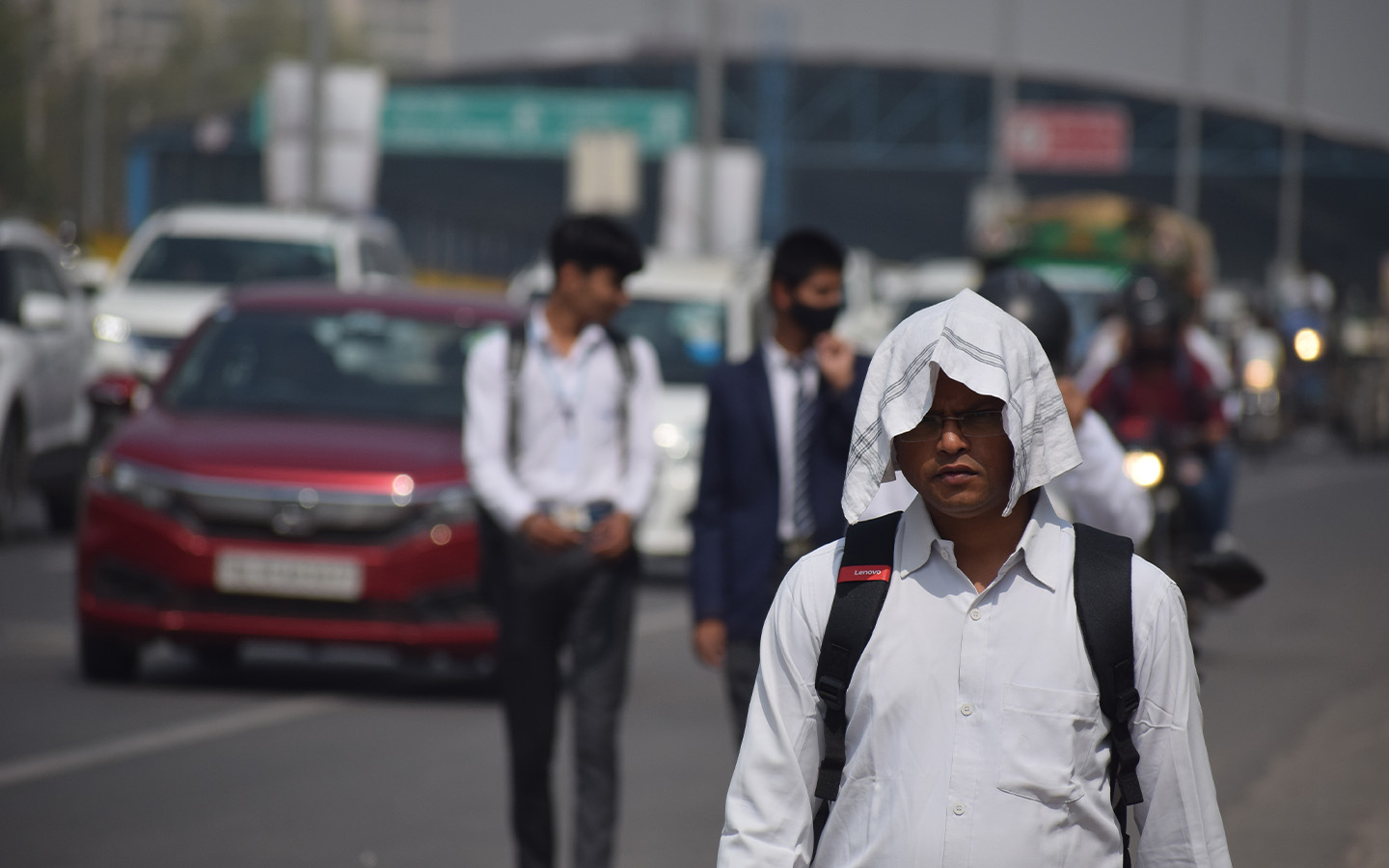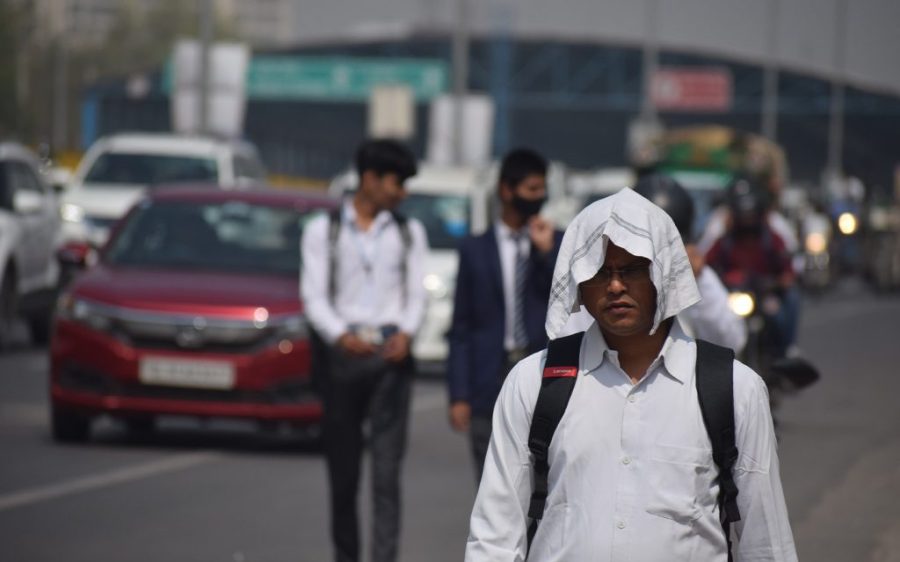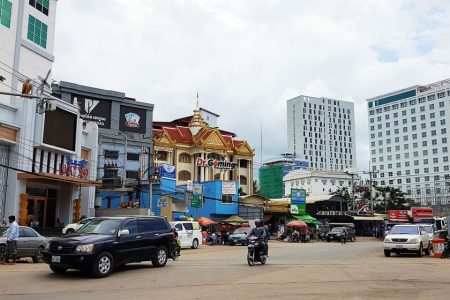Irish roads are melting.
Motorists passing through Lower Goggins Hill in County Cork last Thursday described the tarmac as “slippery as water” as the country blistered under scorching temperatures.
“[The road] was in quite a bad way,” Councillor Ben Dalton O’Sullivan told the Irish Examiner.
An ocean away, this summer’s unyielding heat has caused similar situations in Mumbai, India and Ulsan, South Korea this month. The incidents were brought about by climate change and what experts term the urban “heat island” effect – cities experiencing higher temperatures than rural landscapes due to heat-retaining building materials and buildings blocking wind flow.
In the face of rising temperatures, cities have been turning to creative strategies to keep cool. From reflective pavement to “green corridors,” here’s a roundup of what some cities have been doing to bring down the temperature.
Heat-resistant rooftops in New Delhi
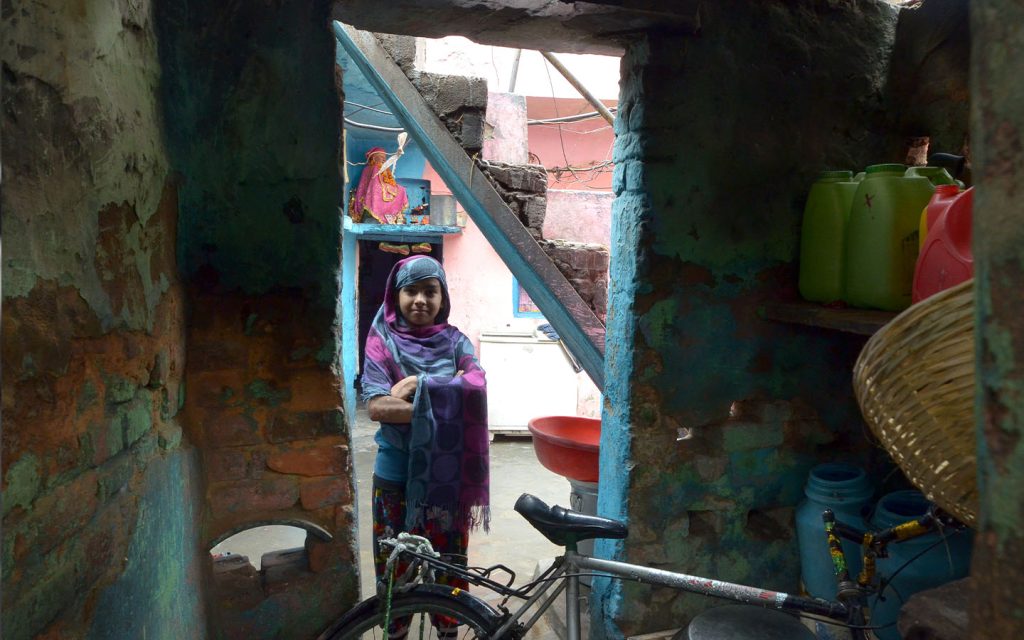
Summer can be brutal in New Delhi, India. Local homes in Kishan Kunj, a low-income neighbourhood, are commonly fitted with tin roofs that absorb heat, causing the mercury inside to rise.
Enter SEEDS, a local charity dedicated to planting resilience to climate change in India. In 2023, they used donations from the philanthropic platform Myriad USA to provide households with better insulation.
[See more: Climate change is cutting into staple crop yields, study finds]
SEEDS sent out teams of volunteers trained to assess the vulnerability of households to the stifling temperatures, and identified the 70 homes most in need of protection. They then gave residents aluminium bubble insulation sheets to be installed underneath the tin roofs. The shiny aluminium helped reflect heat, preventing houses from turning into ovens.
SEEDS’s relatively low-cost solution turned out to be effective: residents soon reported lower temperatures at home. The intervention also caused knock-on effects in the neighbourhood, inspiring residents to use their own materials, such as fabric from bags, as makeshift shields against the sun.
Reflective paint and water spraying in Los Angeles and Seoul
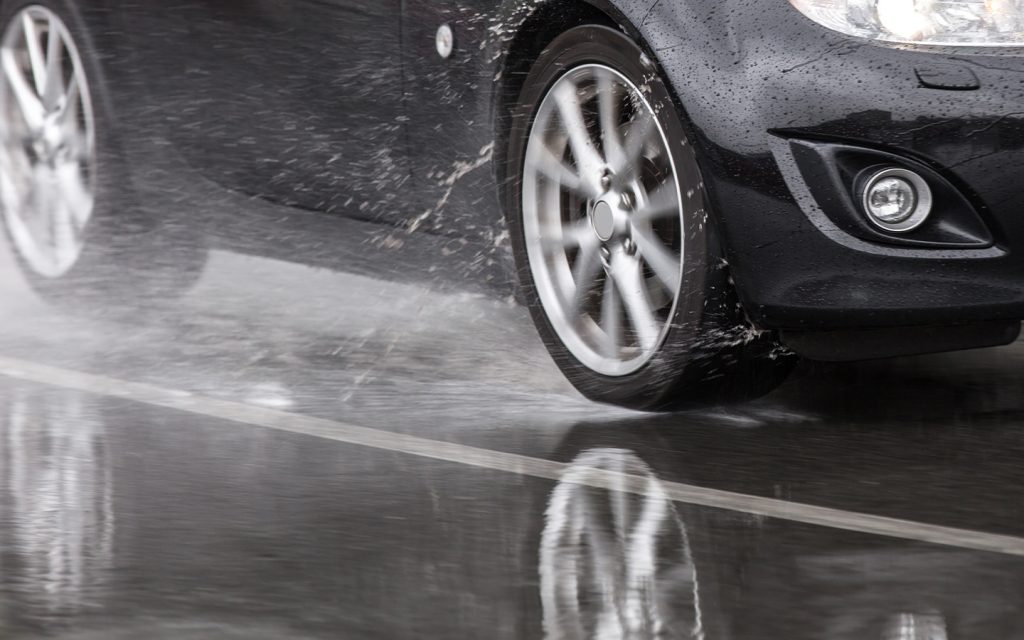
Los Angeles, California tackled the problem of baking asphalt using the science of colour: by painting streets a lighter shade of grey.
According to the United States’ National Oceanic and Atmospheric Administration, darker-colored materials absorb light energy and radiate the energy back into the atmosphere as heat. As such, regular asphalt can reach up to 60°C.
The city, in collaboration with manufacturer GuardTop, has covered streets with a white seal coat. The measure can reduce surface temperatures by 5.6°C to 8.3°C degrees, reports Business Insider.
[See more: Climate change isn’t hurting the quality of Chinese rice, researchers say]
Some residents say the results have been noticeable. When walking from a painted part of the street to an unpainted section, “it felt like a wave, almost, you hit,” resident Ryan Solomon told NPR.
On the other hand, the city of Seoul in South Korea has installed sprinklers in the middle of its roads. The technology was first installed for self-cleaning purposes, but is now also utilised for its ability to reduce road temperatures. The sprinklers work at regular intervals, utilising excess water from Seoul’s subway tunnels.
Spraying water decreases road temperatures by 7°C to 11°C, Seoul City Management Division head Park Young-seo told Korea Now.
Tree-lined avenues in Medellín
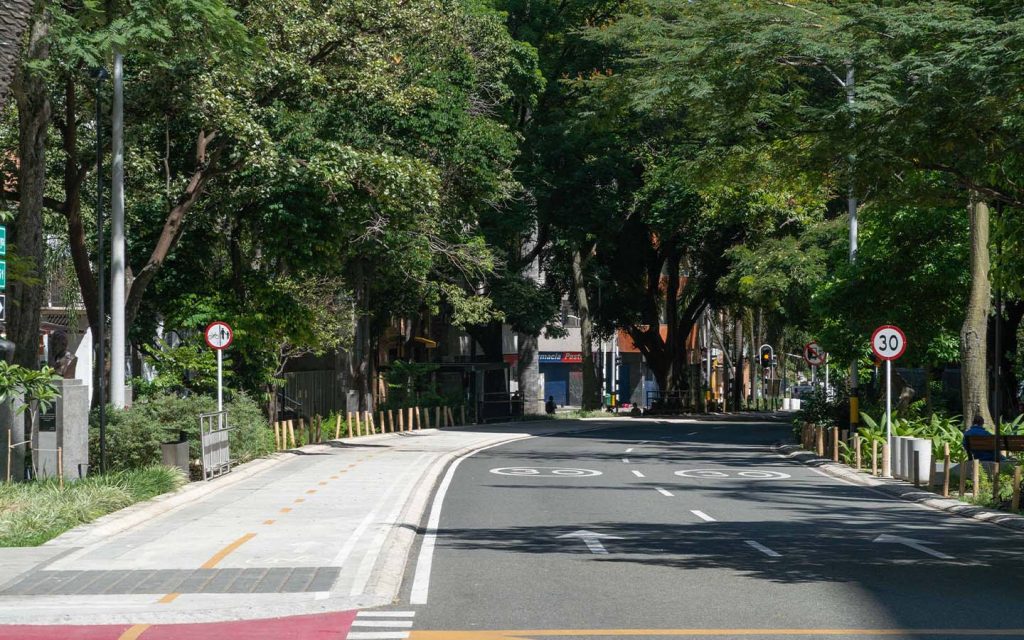
Medellín, Colombia has won an Ashden Award for its “green corridors,” a project that has created a network of roads lined by greenery. Since the initiative started in 2016, tens of thousands of trees and other vegetation have been planted. The species were chosen for their ability to increase biodiversity and aspire air pollutants.
“We focused on areas which most lacked green spaces,” then-Mayor Federico Guetirrez told Ashden of the city’s approach. The corridors simulate the effect of a forest by including multiple levels of plants.
[See more: Paying more for your coffee? Blame climate change for that]
Besides making the weather more bearable, the initiative also provides employment to citizens from disadvantaged backgrounds, according to the C40 Cities Climate Leadership Group Inc. The employees are trained at the Botanical Garden of Medellín, and planted 65 hectares of plants.
According to Guetirrez, the project has made a significant change, turning former places of drug use into community gardens. “The children returned. The families returned,” he said. “Life is returning to those 30 green corridors.”
